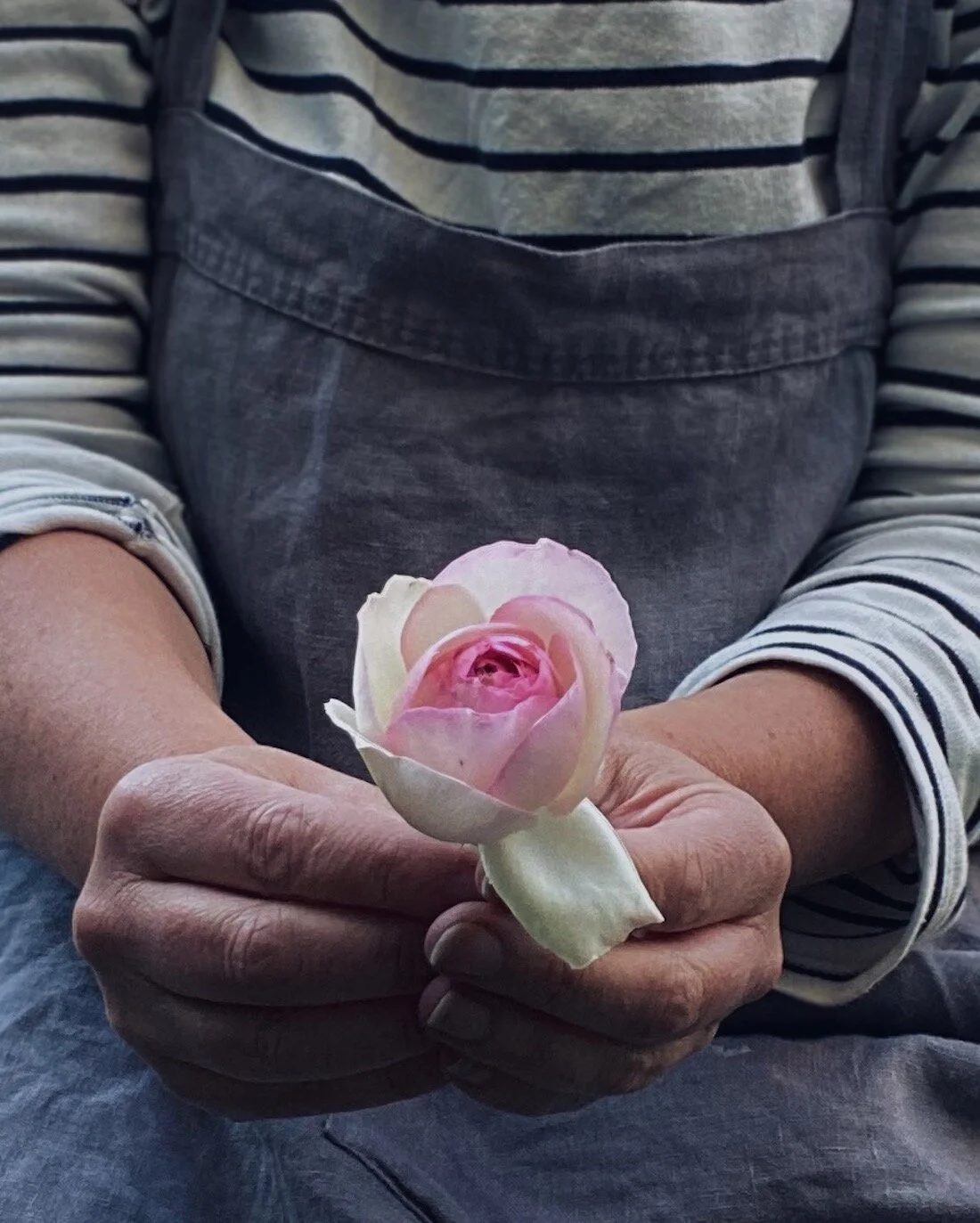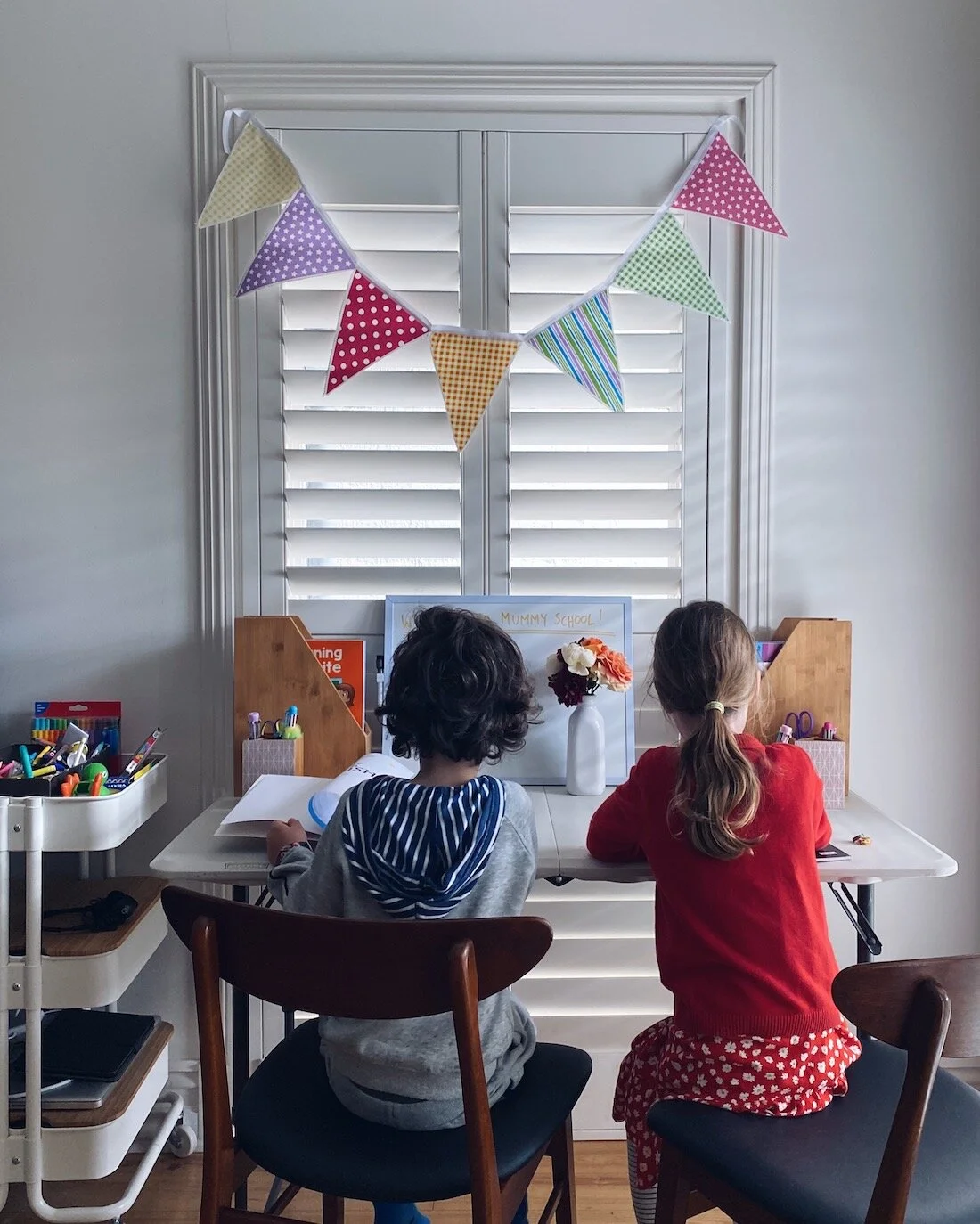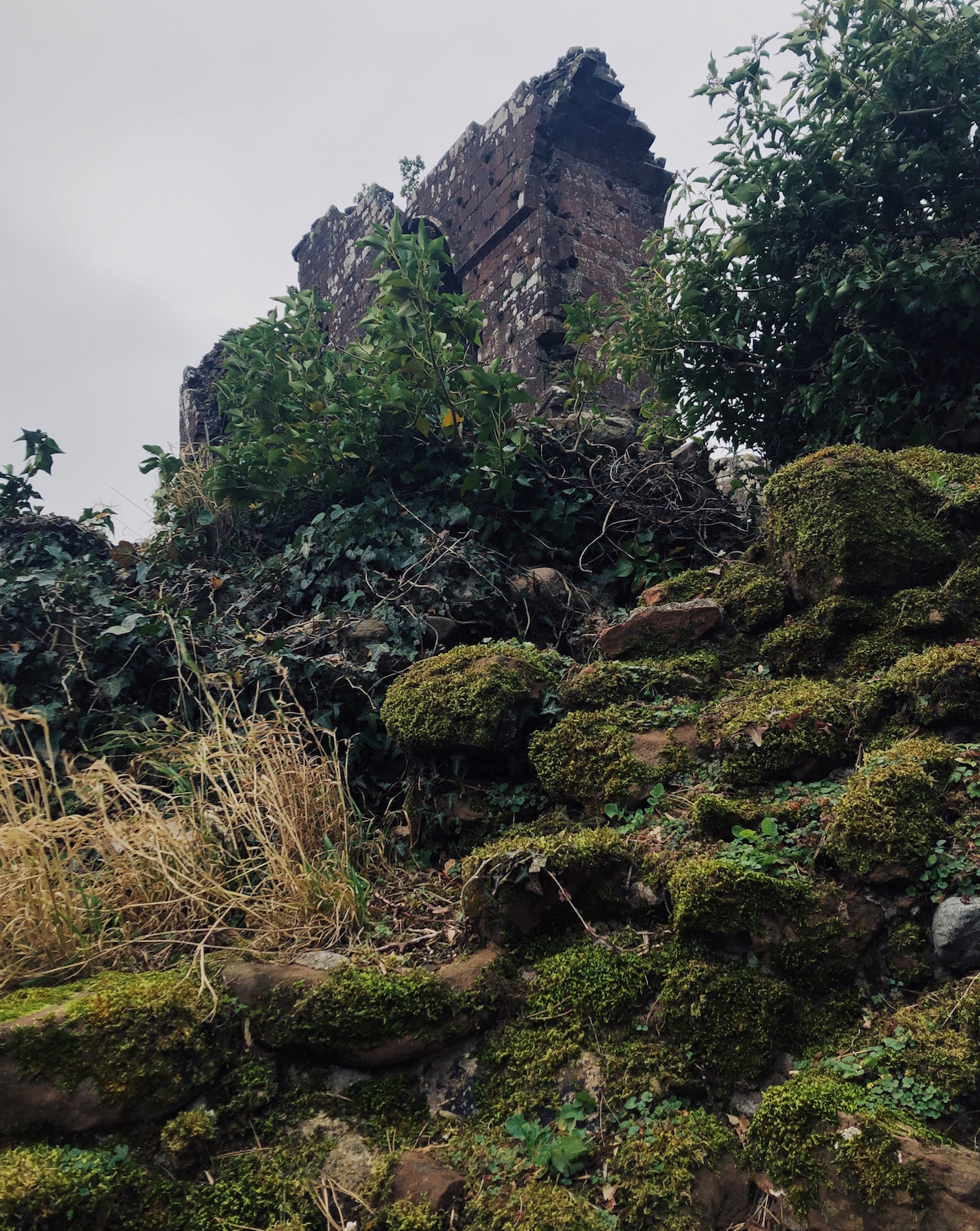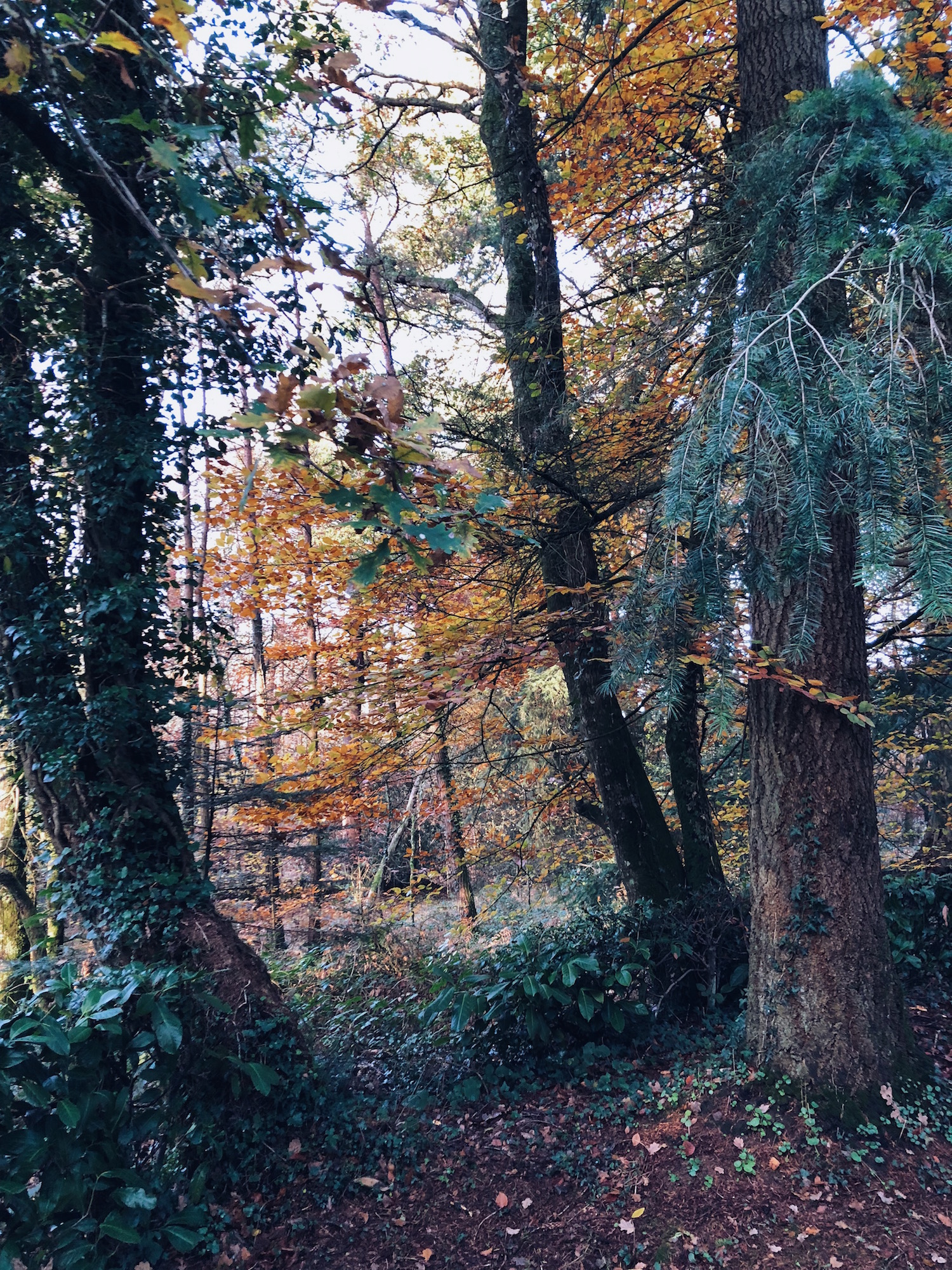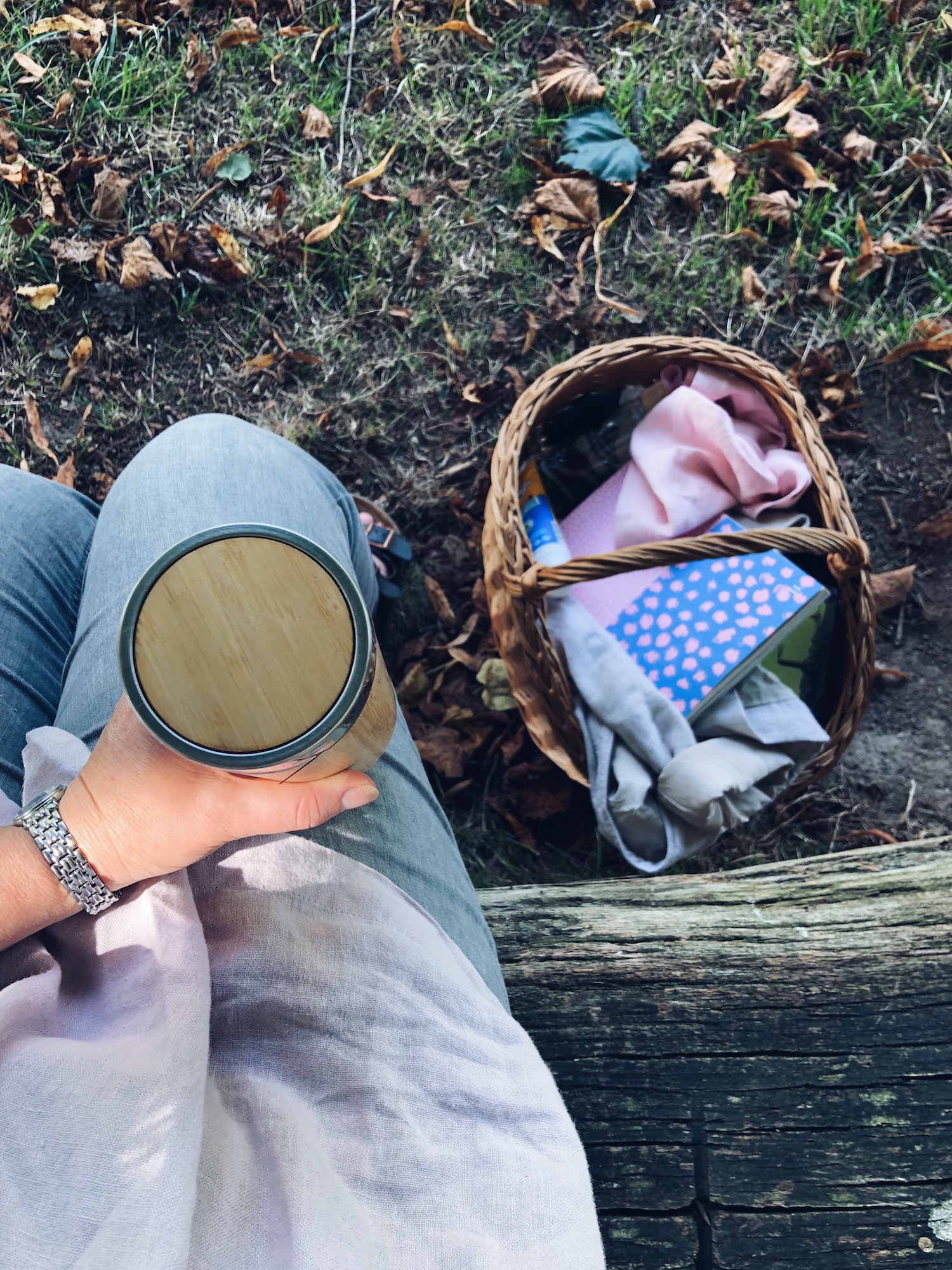
JOURNAL
documenting
&
discovering joyful things
Our small but significant stories
Recently I participated in a giveaway, organised by Annabelle Hickson on Instagram. I’ll share more about that at the end of this post as there are some beautiful prizes you can win. But what prompted this blog post is that Annabelle asked me to share a piece of my story from “lockdown” for the giveaway and, as I was writing to Annabelle, I couldn’t stop thinking about you.
About all of us, really, all over the world. About how this whole COVID-19 experience is so extraordinarily… universal. Never before in history have we been so physically isolated from one another and yet, at the same time, never before have we been so united against a common enemy.
When generations in the future look back on this period in our lives, what will they say? The history books will talk about the big things: the spread of the virus, the deaths, the heroes, the privations, the cure or vaccine (assuming one is found!), the economic fallout… but what will they say about you and me? About what our lives looked like, at home, small but oh so significant, during this unprecedented time?
So I’ve been thinking that I would like to start collecting the smaller stories. OUR stories, little dispatches from isolation. Isolation and lockdown are powerful silencers: there are no external witnesses to my days and nor, I imagine, are there any to yours. Let’s change that!
If you would like to share your story of COVID and lockdown, I will include it in some kind of publication: a specialised blog, an online magazine, an e-book… I don’t know exactly how yet, because that will be governed by the quantity and style of stories I receive. But I can guarantee that if you tell your heartfelt story, you will be published. I can share your name, or keep you anonymous if you prefer.
SUBMIT YOUR STORY
Tell me about your experience of lockdown and social-isolation. Write a sentence or write an essay - it’s up to you! I don’t want to restrict you so you can write anything you like but, if you find yourself stuck for words, here are some prompts or interview questions (inspired by Annabelle’s questions to me) to help you:
Where do you live (just give your city and country)?
The date you’re writing (because things are changing so rapidly!)
What is your name (just say “anonymous” if you’d like to remain so)?
Where are you bunkering down for this period?
What do your days look like?
How has this pandemic impacted you and those you love?
How has it changed what you value?
What gives you hope?
At a later date, I may also be in touch with you to see if you have a photograph of your “lockdown station” that I can include in this publication, so give some thought to this if you’d like to share one.
To submit your story, either share it in the comments, or use the form below. (If you are reading this blog post as an email, simply click “view original post” at the bottom of this post, to see the form and/or comments box). Please don’t submit your story via email - I’m liable to miss or lose it and your experiences, thoughts and words are precious to me!
I’d love it if you would share or mention this blog post on your social media platforms, so that as many people as possible can potentially add their stories to our publication. I’m using the hashtag #dispatchfromisolation.
In the meantime, following is my own story (or a snippet of it) from my own experience of lockdown. The photograph is of my children, hard at work in “Mummy school” since the schools here have been closed.
MY STORY (26 March, 2020)
We live in an inner-city suburb of Melbourne, Australia, in a 100-year-old terrace house. My husband recently returned from overseas and the law in Australia says he has to self-isolate for 14 days, so he has taken over our front room, which normally doubles as my art studio. It has been incredibly tough on all of us - but especially the kids - having Daddy home but not being allowed to cuddle him or even share a room with him. Financially it is also a stressful time, as both of our incomes have been impacted. But, on the other hand, I’m powerfully aware of how lucky we are: we still have our health, we still have a roof over our heads and food on the table, and we are all here together as a family.
I make my husband his meals (and copious instant coffees), and deliver them to him throughout the day. We’re not allowed to share a bathroom with him, which has created an extra challenge for our six-year-old son, who has a morbid fear of being upstairs on his own. Every time he needs the loo, he begs other members of the family to go with him. I told him that singing out loud was a good way to chase away fears, and his fear-fighting weapon of choice is Cheap Thrills by Sia. Whenever we hear “Come on, come on, turn the radio on,” we know he’s making his brave little way up the stairs to the non-quarantined and apparently terrifying loo.
Since the schools closed, we have sectioned up our long, narrow house to keep the children away from their dad. My husband stays in the front part of the house, while I’ve set up “Mummy school” in our playroom out the back, overlooking the garden. (This garden has been a godsend: it’s basically just a courtyard, a converted parking space, but having a safe place to see sky and growing things is a sanity-saver these days).
We haven’t really been embracing all the “slow” activities that come from spending so much time at home, at least not yet. I’ve found home-schooling requires my full-time presence and attention (hats off, not for the first time, to teachers everywhere!) and any spare moments are taken up with trying to reconfigure my business to adapt to this new world. My plans of making fresh bread every couple of mornings have likewise been thwarted because I can’t buy flour right now. But at least we still have toilet paper!
Every day, while we are still allowed to, I take the children out for walks or scoots around the neighbourhood, aiming for parks that are quiet - no playgrounds. Thankfully the weather has cooled down, as I make the children wear mittens or gloves to minimise accidental touching of things outside.
Since they are missing their little friends, we have started writing letters for them, and making small gifts (the dreaded loom bands!) to enclose with the letters. We deliver the letters by hand, posting them into our friends’ letterboxes, then retreat a block or two before I text the family to advise them of their postal surprise. Their friends have been making and writing as well, so it’s a lovely new habit for all the children.
I honestly think that tiny connections like these will save humanity, emotionally, as our weeks in isolation stretch out to months. I’ve heard it said that the COVID-19 is is a battle being fought on two fronts: medical and economical. But I think there is a third front, and that is the emotional impact of prolonged isolation, the lack of physical contact, and sustained anxiety, as it plays out on entire populations.
We have lost so many of the tried-and-true ways we traditionally use to support and comfort one another: I can’t give you a hug, or pop around to your place with something home-baked. We can’t meet for coffee in a cafe or sit side-by-side on my verandah, or gather around your dining table or mine for home-made pasta, cheap red wine, and loud laughter.
In particular, the thought of so many elderly people stuck alone in their houses or in nursing homes absolutely breaks my heart: I worked in nursing homes when I was a university student and know just how lonely those places can be, even in the best of times.
That’s why letters are so wonderful right now. Because they are written by hand, they are tangible missives from me to you (even if we have to spray them with disinfectant) and the paper I choose, and my handwriting on it, give you little glimpses into my personality, my feelings and my world, beyond mere words. The children and I have committed to writing a letter a day to elderly neighbours and friends in the coming weeks. If they want to write back, we can become pen pals.
I have been so encouraged to see so many community initiatives of love, kindness and courage spring up since the lockdowns began. Like messages of hope written in chalk on footpaths for passers-by to read; and bear-hunts or rainbow hunts (people putting teddy-bears and pictures of rainbows in their front gardens or windows, as little treasures for children to find and follow on their lonely walks) are beautiful reminders that the people inside those houses - though locked away - are still with us, and we with them.
Landlords offering rent-relief to financially-strapped tenants. People sharing skills, courses and gifts online. Communities rallying to save and serve their local businesses. Those same businesses adapting to sell online and deliver, to continue serving their customers. People giving away that last roll of toilet paper, that last bottle of hand-sanitiser, to someone else at the supermarket. Families picking up food, medicine and mail for self-isolating neighbours. The teachers who continue to show up for at-risk children and those with parents who can’t work from home, despite the personal risk. Our healthcare workers who are under extraordinary strain, day in, day out, caring for those who are suffering. And whole neighbourhoods applauding healthcare workers from their balconies, every night.
Sharing - and kindness - these are what will define us for future generations, aren’t they. Otherwise, what’s the point? When the history books look back on 2020 as the Year of COVID, and inevitably someone references Lord of the Flies, I think all of us would like to be known as a Ralph, rather than a Roger. Acts of kindness, generosity and patience will give us the courage to live with the fear and uncertainty, and emerge on the other side with our humanity intact and a community that is actually worth rebuilding.
I’ve ordered some wildflower seeds - who knows when they will arrive - and we’re going to make seed balls by rolling up the seeds with clay and compost. In spring we’ll drop them around town on our walks, guerilla-style, to create little floral surprises for our neighbours. Messages of new beginnings and fresh hope.
I haven’t forgotten the giveaway! Annabelle is hosting a week-long giveaway with all kinds of gifts from her community, including beautiful clothes, artworks, books, and more. I’m giving away three places in my online letter-writing and mail-art course, The Most Beautiful Letter You’ve Ever Written. We will be choosing winners at the end of this week, so if you’d like to enter the draw for my course, you can do so here, and if you take a look at Annabelle’s Instagram feed, you’ll see loads more wonderful opportunities for you to win some thoughtful gifts.
Midwinter mystery
I wanted to watch the sun rise through the standing stones on the winter solstice.
In truth, the true magic was supposed to happen at sunset: the last of the day’s light beaming through the passageways of the southwest-facing cairns and spilling over the ancient dead like a gift, for a few precious moments in this one important hour every year, for four thousand years.
But sunset in mid December was at 3.30 in the afternoon, and I knew we’d probably still be out. We had made plans to visit a tiny village close to Nairn, and walk ten kilometres though fields to see Cawdor Castle in the distance, the seat of my distant Calder relatives. Probably, I thought, we’d still be driving home at sunset. (We were).
And the forecast was for rain in the afternoon, anyway.
So we hurried down our breakfast and left in the dark, arriving just in time to watch the dawn instead, as it coloured the ancient wood in gold, and sent the fairies shimmering back into the shadows, seconds before the sun’s rays broke then burst over the nearby hills.
My family wandered with me for a few minutes but then retreated to the relative warmth of the car, leaving me to explore the cairns and stones alone.
For a little while, I pulled my gloves off and rested my fingertips on the ancient standing stones, letting the earth’s currents flow up through that quiet ground and the lichen-covered stone, then coursing into my hands and grounding my body in nature and history.
Four thousand years. It’s an almost unthinkable age to me but, to our planet, those stones are little more than the passing acne of adolescence on the surface of time.
The stones were sharp with ice, and smooth inside the “cups,” little circular dips carved out with stone or antler tools, patiently worked by human hands millennia ago. Hands just like mine, maybe even genetically related to mine, but on people leading lives so different to my experience it is impossible to fathom that which binds us.
Except this earth. This dawn. These stones. They are our constant, linking me to them and them to me as though time did not matter and they had just - just - left, melting away into shadows with the fairies mere moments before I arrived with the sun.
Who were they?
These ancient ancestors of ours positioned the cairns to catch the solstice sunset, and graded the standing stones around them according to astronomical axes. Those that face the sunrise are smaller and whiter, while those placed toward the sunset are larger and the lichen, when scraped away, reveals stones of pink and red.
Artists of the earth.
While I stood alone and watched, the morning sun pierced a cleft stone in the lonely field.
On a whim, I stepped behind the stone and let the cut-light pierce and refract over my face, closing my eyes to the gold, and turning it red beneath my lids.
What do you think it means, that split stone? It is not the biggest nor the most impressive of the standing stones that guard these cairns, but the cleft feels strange, not something you see in nature, and to me it feels like a question. Two almost identical pieces of stone, side by side, kissing at the base but pushing one another apart at the shoulders, creating unearthly shadows and bending the sun’s rays and creating a hard-to-pin-down sense of unease.
Like listening to your parents argue in the next room.
Our humanity unites us throughout the millennia. These stones are part of me and I am part of them. But what do they mean?
The wuthering north
We drove into Cumbria after dark, just as the winds were picking up. Outside it was right on zero degrees, although the little weather app on my iPhone said, helpfully, “feels like -6”. It did.
The journey had been almost twice as long as we’d anticipated, an unlucky accumulation of London traffic that had continued for three hours outside London; a sun that set at half-past-three in the afternoon, leaving us to navigate our oversized hire-car through steep and winding country roads after dark; and, speaking of navigation, numerous opportunities to take wrong turns and get lost, which we did (there were even road-signs saying “don’t trust the sat-nav”).
From bed that night I could just see the soft, watery light of the crescent moon behind the still-gathering clouds, filtering and refracting through diamond-paned windows that had filtered and refracted moonlight into this room for 500 years, exaggerating the shadows of the beams in our ceiling. The wind was picking up, battering around the ancient walls of our gatehouse in a beautiful fury.
“I love it here,” I whispered to my husband, although he might already have been asleep. “I can’t even tell you. I really love it here!”
The moon was long gone by morning, and the sun was doing its best job of hiding, too, but the grey dawn revealed bare trees and stone walls and crumbling ruins and bracken-covered hills as far as the eye could see. I ran outside in my slippers, hugging my pyjamas close, and drew in the wild view like oxygen.
Back inside, I put on the kettle and made eggs on toast for my family, while the wind positively howled. “Wow!” said the children (about the weather, not my eggs). And as we sat down at the farmhouse table under a window, beside a cast-iron fire that was cracking and popping and spreading warmth, I thought, “We are inside Wuthering Heights.”
Naturally, there was a pretty village nearby, where one could find welcoming locals with musical accents and a cafe with cockle-warming, home-cooked meals. Also naturally, there was a castle ruin, a 900-year-old edifice on an ancient mound that was once settled by Danes and was still part of Scotland until a thousand years ago or so.
I climbed the hill to the ruins alone, while the rest of my family went to find somewhere to buy groceries. The promised “ice rain” had begun, and I have honestly never felt as cold as I did atop that wild and windswept hill, not even on the January night I walked home beside the Hudson River in New York with my friend, and we learned later that it had been -18 degrees.
It was the wind. The wind that burned my ears with cold like razors, stung my eyes with dry tears, tipped me sideways, and genuinely sucked the breath from my lungs whenever I faced into it. Literally breathtaking.
How is it that this world is so full of so many beautiful places? How can we bear it, in our hearts? We only stayed in this ancient gatehouse, perched on the edge of lovely emptiness, for two nights, but I cried for the beauty of it all three times.
I didn’t want to leave. But then, that’s also how I’d felt when first we climbed the steep, cobblestoned streets of Dinan, when we made our picnic under the trees at the castle ruins of Lehon, when we lay down in sunshine among fields of wildflowers in the grounds of Hever Castle, and when we lost ourselves inside the ancient, golden-hued forest of Broceliande. I know I’ve talked about this on my blog before, the twin concepts of home and belonging.
When I married my husband, we made the song Home is wherever I’m with you by Edward Sharpe and the Magnetic Zeroes the unofficial theme-song of our marriage, a testament to where we’d been and where we were going, after I’d left New York to live with him. Every time we moved to a new city, I sought out ways to make it feel like home. I enrolled in a Master’s Degree when we moved to Queensland. I planted a garden when we moved to Sydney. I volunteered when we moved to Adelaide. When we moved to Melbourne, I was already pregnant with my daughter, so new mothers became my community.
I don’t quite know when I started growing restless again. Partly, I think it had to do with having children. The day you hold that new baby in your arms, your world instantly unfolds like a meadow of night-blooming cereus: dazzling flowers, hypnotically-scented, and all opening en masse in one, magic night. But parenthood can also draw your world inside (like the night-blooming cereus closing at dawn, maybe?), and even if you don’t have kids, you’ve heard enough stories from friends and siblings and aunties and grandparents… or read enough mummy-blogs… that you don’t need me to talk about that odd and disorienting and beautiful and isolating parenthood bubble right now.
My point is that becoming a mother, while undeniably the best decision I ever made and the best thing I will ever do, also taught me to see my home-town in a different way. The exciting cafes and galleries and festivals and street-art and food trucks and pop-up events that once helped me fall in love with my city became, almost overnight, all-but lost to me, sitting at home with sleeping (or not-sleeping) babies while my husband worked 100 hours a week.
I have watched the world go on without me, from the distance of the Internet.
And when you take away all the wonderful things about life in the city, you start to notice the restrictive things. The lack of fresh air, open spaces, and trees. The reliance on other things (shops, cars, telephones) for even the most basic necessities of life. With a fidgeting toddler in one arm and a hungry baby in the other, the world feels as though it doesn’t belong to you any more, and for those of us used to being “in control” in the workplace, this new workplace feels about as out of control as workplaces come.
So, as I stood alone on that ancient hilltop in the breath-stealing wind, these were some of the thoughts that were going through my mind. I wanted to live in this place more than I’d wanted to live anywhere, ever. I sort-of cried, again, but I didn’t truly cry, because the wind stung my eyes and dried my tears before they could fall.
We won’t be moving to Cumbria any time soon, no matter how badly I want it. And the truth is that even more than I want that open-fielded life, I want to stay with the people who fill my life right now. They are my home, wherever I go (Home is wherever I’m with you).
After I climbed down from the castle ruins, I found my family in a little second-hand shop on the high street, deep in conversation with three locals who had each lived in this village and known one another for eight decades, or more. They recommended the fish and chips shop for lunch and, an hour or so later when we bustled in from the rain and found somewhere to sit, our new friends were already ensconced around a table at the back.
As we left, my husband secretly paid for their lunch and another round of their coffees, and it’s times like this that I remember why I first made him my home.
Brocéliande
Do you believe in magic?
I do, now.
I believe in the magic of forest paths that lead to unknown places, and ancient oak-trees with roots that reach so far into the earth that they touch history.
I believe in the magic of red-and-gold leaves that fall like rain, the crunch of them underfoot, and the sound of wind like whispered promises. I believe in the magic of afternoon light that is actually gold, mist in the morning like a blanket, and the smell of woodsmoke in the air.
Of mulled wine and hot chocolate, sipped in cafes with fogged-up windows and friendly strangers. The call of owls in the night, carrying across still water.
I believe in the magic of standing in a place of legends, the very spot where, at some point in the 5th Century AD, a Briton named Arthur once spearheaded a resistance against invaders from the north, and inspired more than a thousand years of stories.
Stories of love, of betrayal, of heroics, of swords, and stones, of witches, and warlocks, of knights, of round tables, of grails, and of kingdoms that unite and endure.
And of a lady in a still and silent lake.
Summer picnic
We spread out our blanket in the shade on the grassy flat inside the ruins of the castle. All around us, birdsong. The paper-rustle of the breeze in the trees. The occasional, distant hum of a car bracing itself to climb the hill on the other side. And centuries. The sound of centuries. The vibrations of a thousand years, deeper than human hearing but as real as that bumble-bee we saw, drunk on pollen, staggering from borage to blackberry and back again.
I take off my shoes and the grass is soft and warm beneath my toes. I want my body to touch the hum of the centuries, to see if they will touch me.
"Are you grounding, Mummy?" asks Scout. That's my girl. The children kick off their shoes, too, and race about amid the wildflowers, shooting corks at each other from toy wooden crossbows. We pick flowers to press and, when the sun gets too hot, retreat into the shade for lunch. It is simple fare, but so, so good. Baguette from our favourite boulanger in town, soft cheese, pear and apple. And because I am still not entirely French, a thermos of hot tea.
I stretch out on my stomach, kicking my bare feet in the air behind me, and read to the children aloud from Lunch Lady magazine. A story about the romance of caravanning in Australia. Scout says, "Let's stay here for the whole day," and I agree. Ralph discovers he can carry the corks for his crossbow inside the fat curls on his head.
There is a plaque set near one of the ruined towers of the castle, that tells a little of the history of this place. It is uncharacteristically poetic for a plaque, and so beautiful that I search the small-print for an attribution of some kind. I feel as though I'm reading Victor Hugo, or Walter Scott, rather than someone from the Bretagne Tourism Office, circa nineteen-eighty-something.
I'll share some of it with you.
"For over a thousand years, the mighty castle walls dominated the banks of the river and echoed to the clash of iron and the cries of warriors. Now all is quiet on the deserted peak. Nothing is to be heard but the songs of the shepherds and the birds. The old feudal giant is nothing more than a meagre skeleton and each winter carries off a fragment. Only brambles and wild flowers inhabit the gaping ruins. Corn and apples ripen the orchard that once was a place of arms. Only the dew from heaven and the labourer's sweat now water this earth which warfare once drenched in blood and tears."
The travelling post office
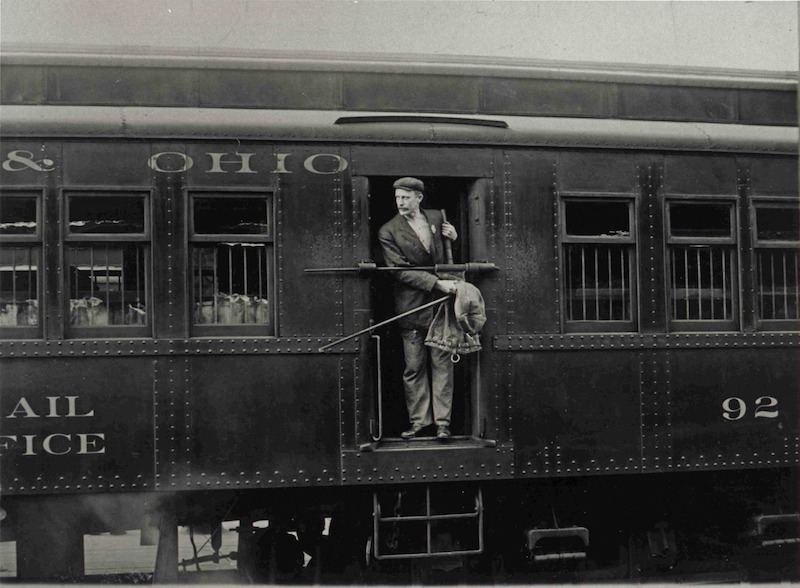 Night Mail is a 20-minute documentary on postal workers. On a train between England and Scotland, in the 1930s. Don't even pretend you're not rolling your eyes.
Night Mail is a 20-minute documentary on postal workers. On a train between England and Scotland, in the 1930s. Don't even pretend you're not rolling your eyes.
Essentially this “documentary” (which is more like a bunch of postal workers reenacting their nightly duties, badly and adorably) follows the mail-express, a fast-moving steam train that used to hurtle every night from London to Scotland (Glasgow, Edinburgh, Aberdeen).
Inside the train was a travelling post office. There were no passengers, but 40 postal workers would spend the night on the train, picking up, dropping off and sorting half a million letters.
They wouldn’t stop to make deliveries or pick-ups, instead relying on what seemed to me hilarious systems of dubious reliance.
FOR EXAMPLE... to make pick-ups, mail workers on the ground would attach post-bags to spring hooks and dangle them over the tracks: the impact of the train as it passed would knock them into special holding boxes in the carriages.
There is a cute and crazy moment in the film where they plan a drop-off, which again is basically to dangle the bags (tied on with STRING) outside the moving train, allowing the speed of impact to knock the bags into cages beside the tracks.
One of the postal workers asks “Now?” and the other says, “No, it’s two bridges and 45 beats yet.” And then they literally hang out the train-doors as they go under first one bridge then two, and then start counting the beats: clackety-clack – ONE – clackety-clack – TWO… and when they get to 45, out go the bags and WHACK, they are knocked into the waiting cages.
How’s that for scientific precision!
And yet with this seemingly-crazy system did the travelling post office manage to deliver half a million hand-sorted letters per night, every night, delivering 500 million letters to the people of England and Scotland, each year.
Lordy. With that amount of work, they absolutely deserved their own documentary!
Do you want to watch it? Ok I know. But if you DO, it's here:
What to know about more "movies about mail?" Here's a list I made for myself to watch a while back.
Image credit: this is a vintage image of the mail train in the USA, because I couldn't find a good one to use of the England-Scotland train, and screen grabs from the film weren't great quality. It has no known copyright restrictions, and the Smithsonian Institution Flickr page describes it as "A Railway Post Office clerk is photographed holding a mail pouch and leaning out of a Baltimore & Ohio railroad car next to the car's mail exchange arm, as if waiting to make a mail exchange."


